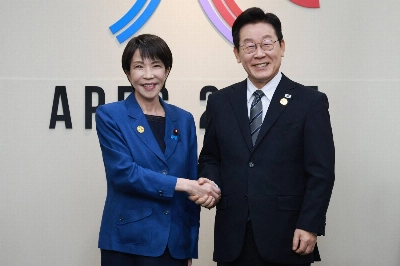Tomoyo Shibuya's coat is more than six years old, but she has no plans to ditch it. Instead of buying a new coat, she went to a handicraft shop, bought new navy-blue buttons, the same color as the coat, to replace the old silver buttons.
"I didn't want to throw away my coat . . . and I wanted to add my own flavor," said Shibuya, a company employee in Tokyo, adding that she also embroidered her initial on a T-shirt and sweater, as she had seen in a magazine.
Due to the ongoing recession, handicraft shops, once a place for the elderly or housewives, are increasingly attracting young customers like Shibuya who opt for maintaining their clothes by changing buttons or attaching studs instead of buying new ones.
















With your current subscription plan you can comment on stories. However, before writing your first comment, please create a display name in the Profile section of your subscriber account page.